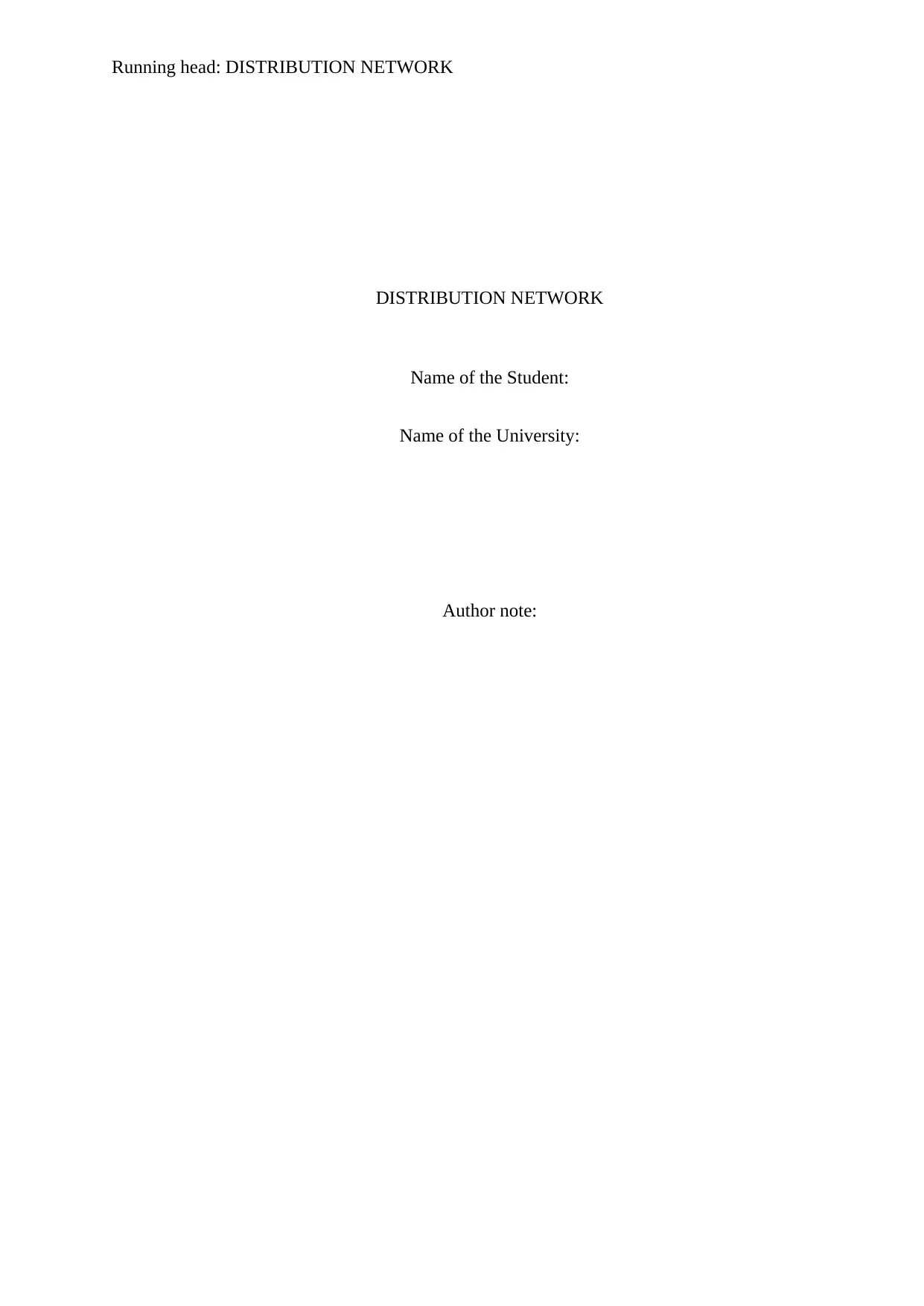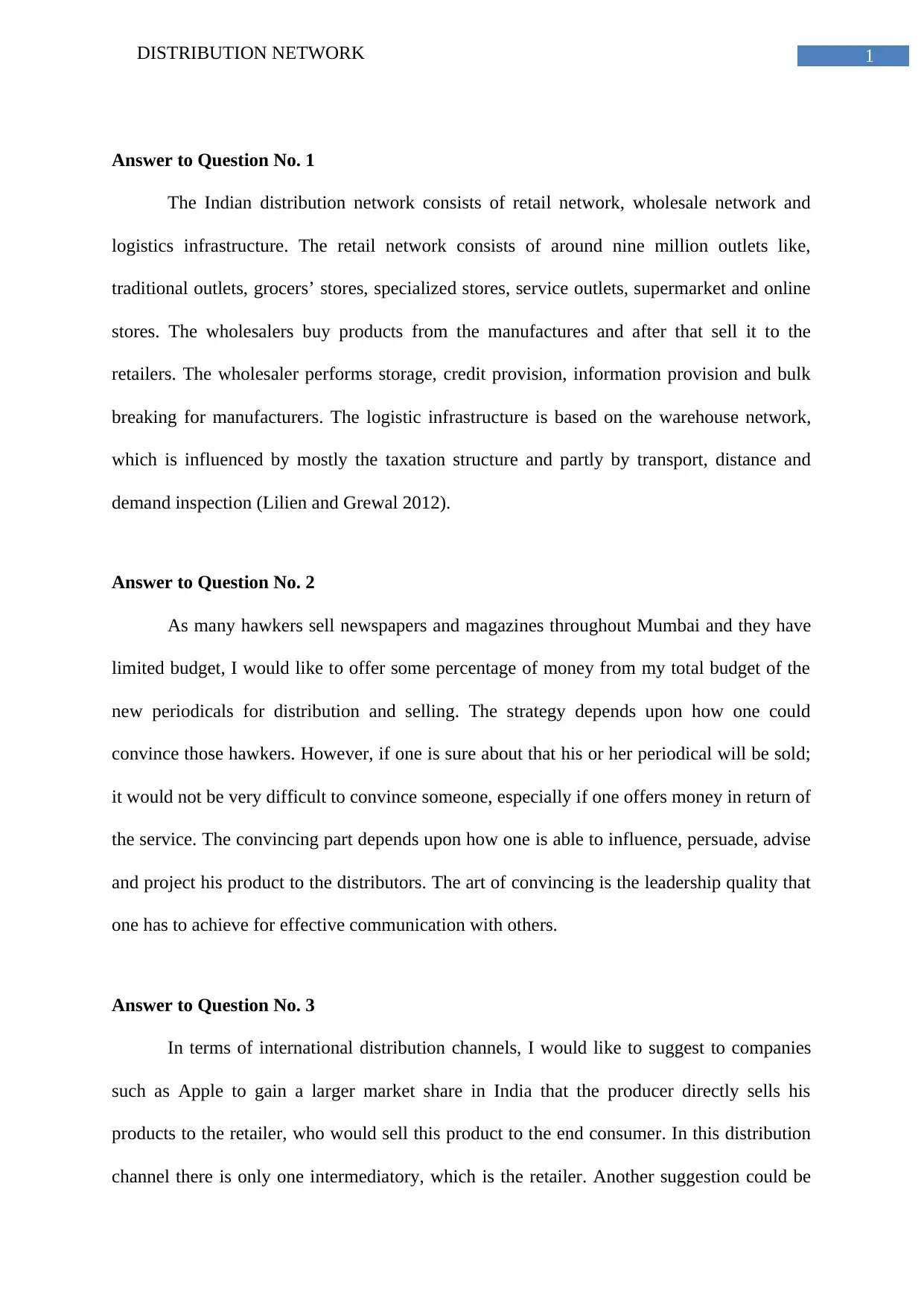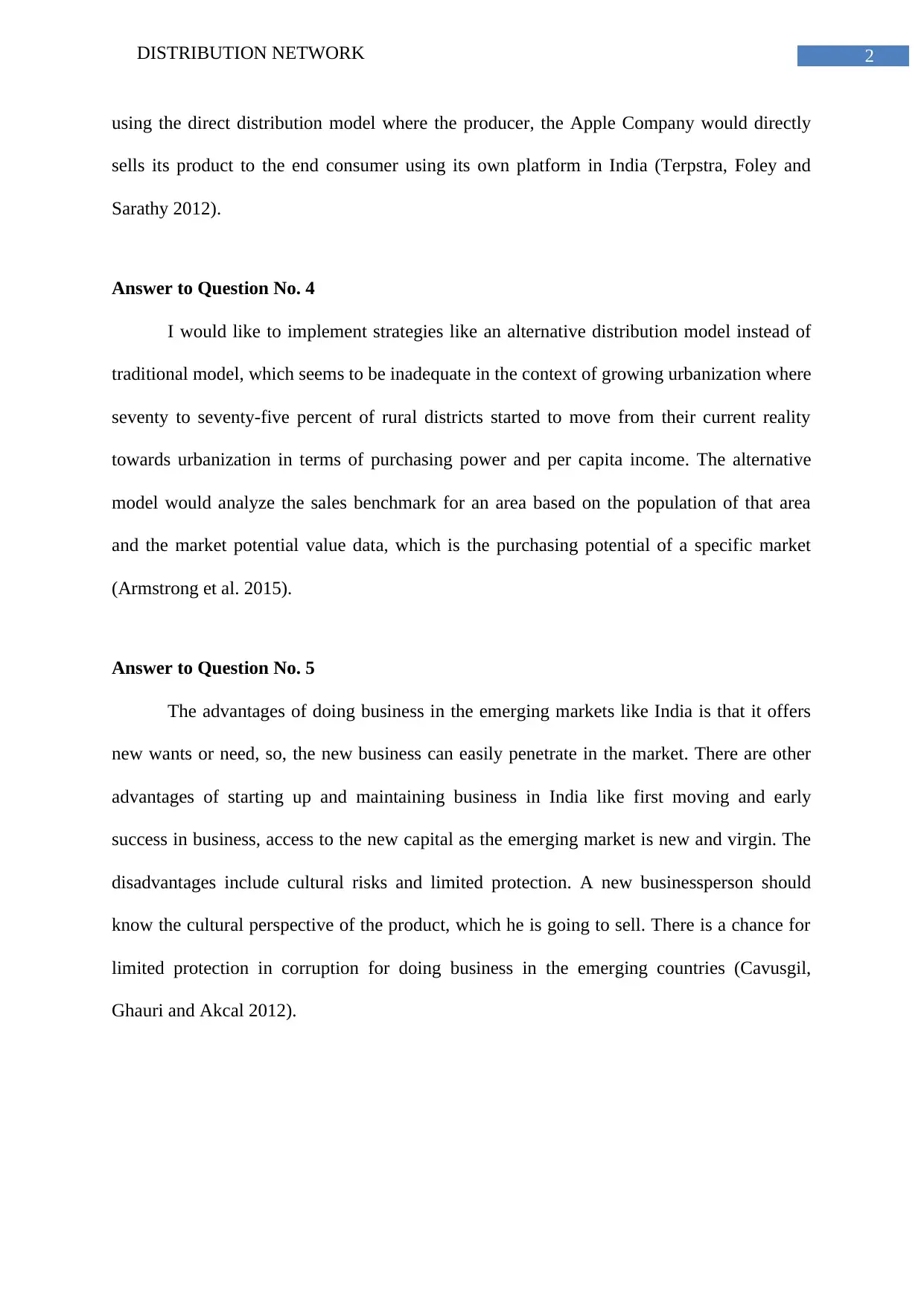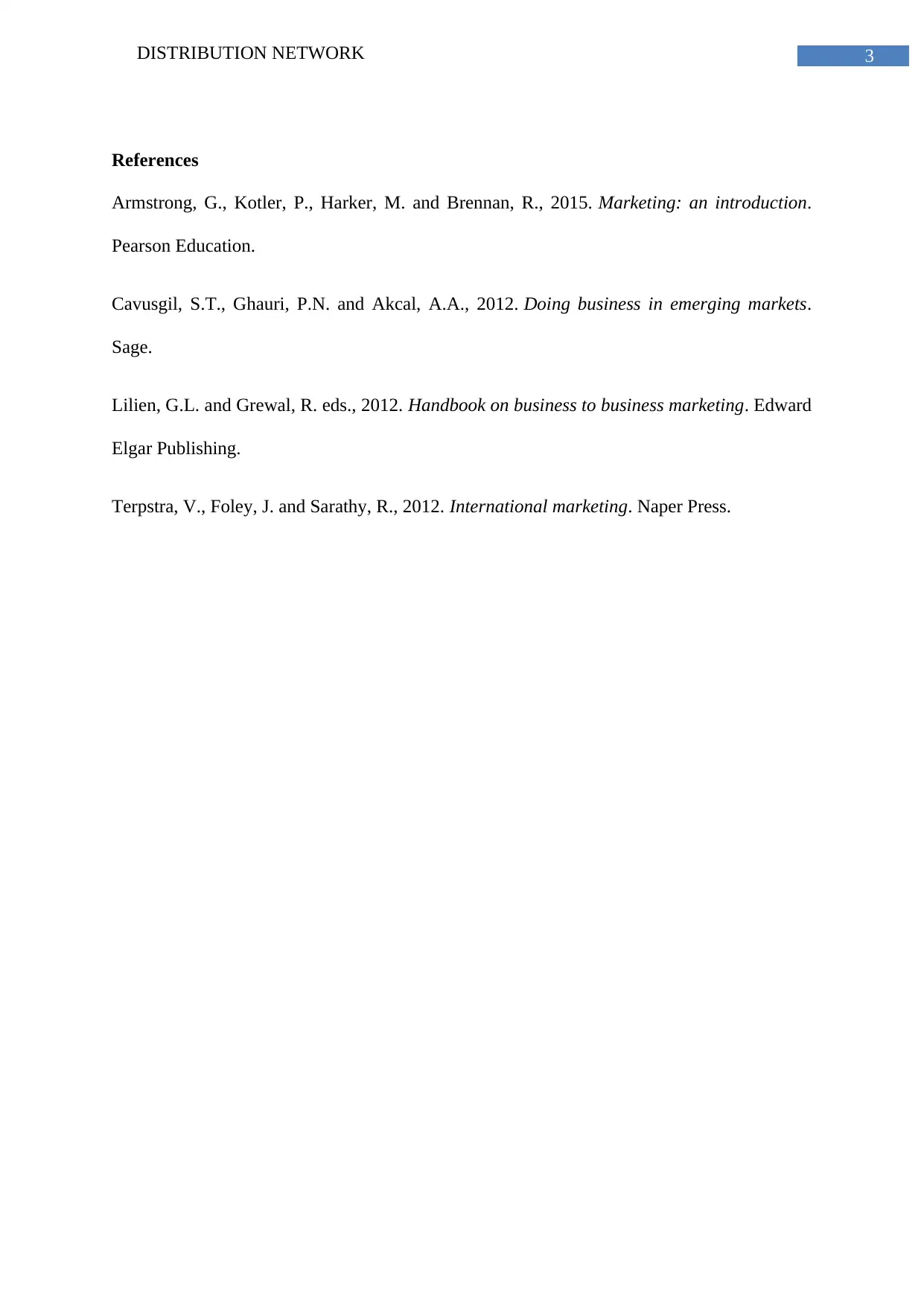Distribution Network Analysis: Marketing Strategies and Channels
VerifiedAdded on 2019/11/25
|4
|700
|225
Homework Assignment
AI Summary
This assignment analyzes distribution networks, focusing on the Indian market. It explores the retail network, wholesale network, and logistics infrastructure, identifying key components and their functions. The assignment addresses specific questions, such as how to utilize hawkers for periodical distribution, suggesting strategies for convincing them. It further suggests international distribution channels for companies like Apple, including direct-to-retailer and direct distribution models. The assignment also proposes an alternative distribution model for urbanizing areas and discusses the advantages and disadvantages of doing business in emerging markets like India, highlighting cultural risks and market opportunities. The document draws on several marketing textbooks and resources to support its analysis.
1 out of 4











![[object Object]](/_next/static/media/star-bottom.7253800d.svg)